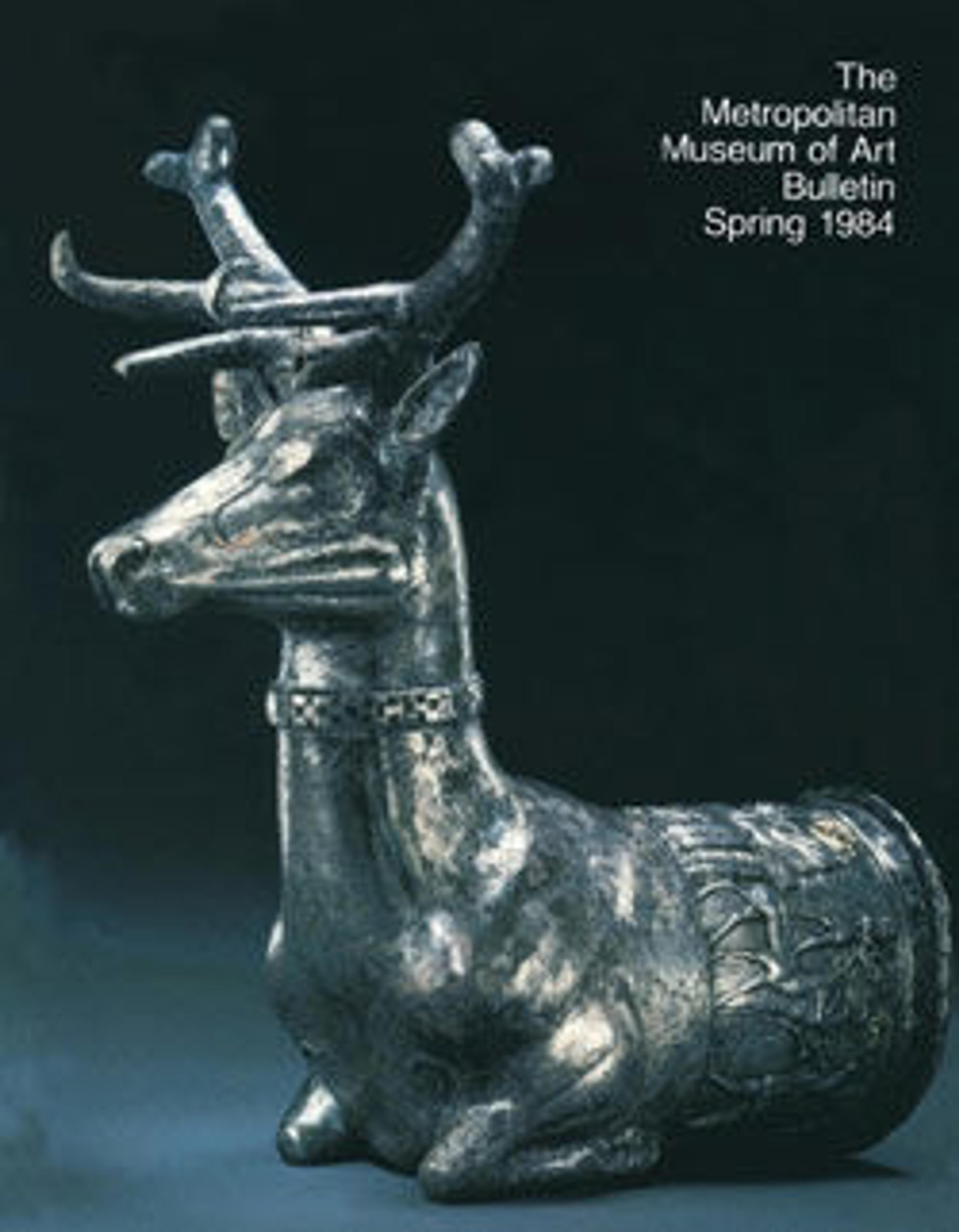Furniture support: female sphinx with Hathor-style curls
This piece is one of a set of four furniture legs, probably found at the site of a palace at Acemhöyük in central Anatolia, carved in the shape of compact seated sphinxes without wings. They have large eyes with inlaid pupils, only one of which survives intact. Traces of gold foil remain on the hair and headdresses as well as eyes of some examples. The pink staining of this piece indicates that iron oxides are present on the surface, although it is not known whether this was a deliberate decorative treatment, or a result of contact with the soil in which the pieces were buried. Additionally, the overall gray color indicates that the object was exposed to considerable heat, perhaps during the destruction of the palace. Each sphinx wears a wig or hairstyle in which heavy locks of hair ending in large curls, held behind protruding ears, frame the face, resembling images of the Egyptian goddess Hathor. In Egypt, sphinxes with the attributes of Hathor were associated with royal women. It is not known what these images meant in Anatolia, but their location within a palace suggests that they could have had the same function there.
The sphinxes probably belonged to a small piece of furniture that would not have held much weight. Mortises were drilled into the tops of the heads, with additional drilled holes across these mortises that would have held pins to secure tenons. On one side of the head of each sphinx the curls are either omitted or only roughly carved, suggesting this side may not have been visible. This has allowed scholars to reconstruct their original arrangement, in which this piece is positioned at the front left side.
The sphinxes probably belonged to a small piece of furniture that would not have held much weight. Mortises were drilled into the tops of the heads, with additional drilled holes across these mortises that would have held pins to secure tenons. On one side of the head of each sphinx the curls are either omitted or only roughly carved, suggesting this side may not have been visible. This has allowed scholars to reconstruct their original arrangement, in which this piece is positioned at the front left side.
Artwork Details
- Title:Furniture support: female sphinx with Hathor-style curls
- Period:Middle Bronze Age–Old Assyrian Trading Colony
- Date:ca. 18th century BCE
- Geography:Anatolia, probably from Acemhöyük
- Culture:Old Assyrian Trading Colony
- Medium:Ivory (hippopotamus), gold foil
- Dimensions:5 in. × 1 5/8 in. × 1 7/8 in. (12.7 × 4.1 × 4.8 cm)
- Credit Line:Gift of Mrs. George D. Pratt, in memory of George D. Pratt, 1936
- Object Number:36.70.8
- Curatorial Department: Ancient West Asian Art
More Artwork
Research Resources
The Met provides unparalleled resources for research and welcomes an international community of students and scholars. The Met's Open Access API is where creators and researchers can connect to the The Met collection. Open Access data and public domain images are available for unrestricted commercial and noncommercial use without permission or fee.
To request images under copyright and other restrictions, please use this Image Request form.
Feedback
We continue to research and examine historical and cultural context for objects in The Met collection. If you have comments or questions about this object record, please contact us using the form below. The Museum looks forward to receiving your comments.
